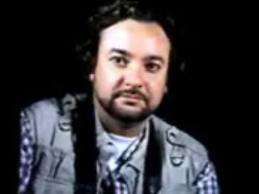
July 23, 2003
Case: Luiz Antônio da Costa
|
Photographer:
July 25, 2004
Clarinha Glock
Around 3:20 p.m., on July 23, 2003, a photographer from Época magazine, Luiz Antônio da Costa, 36 years old, was killed while covering a takeover of land by members of the Without a Roof Movement (Movimiento Sin Techo); in São Bernardo do Campo, São Paulo. He was talking with other reporters and a leader of the movement when the hit man passed by running and shot at him. Photographer, André Porto, from Agora São Paulo magazine, was able to shoot a picture after the crime with the killer with the firearm in his hands. The suspect was identified by witnesses as the same person who moments before Costa’s murder robbed a nearby gas station.
“It was quick, I saw a person shoving Costa’s camera, he took a step back and they shot at him,” told Porto, who added that there were at least another five photographers with Costa.
Police have some theories on the cause of the crime. One of them, according to Nelson Silveira Guimarães, chief of the Police Department of Greater São Paulo – responsible for 38 municipalities, including São Bernardo do Campo –, is that the photographer’s killer was involved in the gas station robbery and tried to steal Costa’s camera. A cameraman from TV Globo, who was also present and recognized the suspect, said that he tried to steal the video camera before approaching the photographer from Época. Another theory is that the killer had some kind of an argument with the photographer and that he was a member of the group that illegally occupied the land.
It appeared strange to Officer Guimarães that the killer ran towards the direction of the crowds of protesters running the risk of being lynched or captured. He also stated that representatives from the Without a Roof Movement (Movimiento Sin Techo) that estimated the presence of close to five thousand families could have helped the killer hide amongst the masses and obtains direct protection. Guimarães reported that 50 policemen would be working on this case.
Costa worked for five years at Época magazine, but most recently worked as a freelance photographer for the magazine. The photographer’s murder reopened debate in Brazil on the risks relating to the practice of journalism in that country and the difficulty for police and the justice system to find and punish those responsible. Since the death of TV Globo reporter Tim Lopes, who was brutally killed by drug traffickers in June 2002 while reporting on a funk dance in the hillsides of Rio de Janeiro, another five murdered have occurred that could be linked to working in the profession.
Businessman Domingos Sávio Brandão Lima Júnior was murdered on September 30, 2002, in Cuiabá, Mato Grosso. He was the owner of Folha do Estado and Rádio Cidade Cuiabá FM. Police believes that Lima’s death was connected to complaints in his newspaper about organized crime and illegal gambling.
Reporter Melyssa Martins Corrêa, 23 years old, editor of Caderno Tem! In Oeste Notícias newspaper, was killed in Presidente Prudente, São Paulo, on June 3, 2003. Investigations indicate that it was an armed assault, but the possibility was considered that the crime was in retaliation for criticisms made by other reporters at the paper on the presence of organized crime in the region. The murderer was identified but is still at large.
Edgar Ribeiro Pereira de Oliveira, 43 years old, partner/owner of the weekly Boca do Povo, in Campo Grande, Mato Grosso do Sul, was killed on June 9, 2003. Nicanor Linhares Batista, a radio reporter, was killed on June 30, 2003, in Limoeiro do Norte, Ceará. He was director general of Rádio Vale Jaguaribana. He had a program called “Political Forum” (Encuentro Político). In these two cases, the journalists raised controversial topics and their murders could have been linked to criticisms made by the victims or their way of obtaining information, which according to accusations, was through blackmail.
|